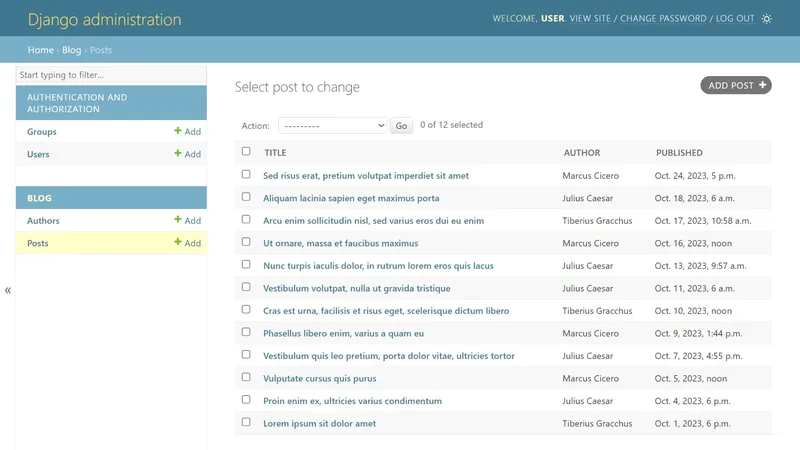On an almost weekly basis, I am given the free advice that we (CodeRed Cloud) should offer a $5/month plan. Tons of people would buy it, I am told.
I myself have often had the same idea. It sounds great on paper. Except for one pesky thing... everything actually costs more than $5!
There's a common delusion regarding technology, by both consumers and B2B, that software is virtually cost free. You build it once, never have to touch it again, and can sell unlimited copies forever. In that case, $5/month is a license to print money.
We are all guilty of subconsciously sharing this delusion; myself included. We have become so conditioned to the 2010's venture capital-fueled model of data-mined "freemium" services, that we often times forget what it takes to actually build something. To quote the Twitter joke: "we can't, we don't remember how".
What other things cost $5?
Let's do a bit of market research here in the year of our lord 2024. Here's a list of household-name commodities that we think of as cheap, trivial purchases.
| Item | Cost |
|---|---|
| The Costco hot dog | $1.50 |
| Starbucks venti black coffee | $2.45 |
| Starbucks venti pumpkin spice latte | $5.25 |
| McDonald's Big Mac meal | $12.19 |
| — Software Prices — | |
| Spotify Premium | $11.99/month |
| Netflix Standard | $15.49/month |
| Heroku Basic + Postgres Basic (minimum for a real-world website) | $16/month |
| WP Engine (WordPress) Essentials (cheapest plan) | $20/month |
| Kinsta (WordPress) Starter (cheapest plan) | $30/month |
So what can you actually get for $5? Basically a hot dog or a coffee. In both cases, a worker is spending say 1 minute to cook your food, and 1 minute to service you. If that worker is paid a wage of $15/hour, that is amounting to $0.50 they are spending on you, cutting in to that precious $5 of revenue.
A Profitable Thought Experiment
According to the Bureau of Labor Statics, as of May 2023 the median wage for "Software and Web Developers, Programmers, and Testers" in the US is $61.11. Let's round that to an even $60.
Let's start a startup, "HotdogSoft", based on the Costco hot dog example. This name is also fitting because we are going to see how the sausage is made. If a software developer in the US from HotdogSoft were selling tube-steaks, and spent 1 minute per month on each customer, that would still cost $1 per customer. We all like to think of tech as fully automated, but even if the developer never interacts with the customer, someone still needs to write down the sale on a form and submit that to the IRS. There is no fully automated business that has zero humans. I would also argue there is no business that spends less than an average of 1 minute per sale/customer (whether directly or indirectly). Someone also had to cook the hot dog, or software, in the first place, however simple or complicated that may have been. So if they spend 1 minute on the customer, and 1 minute cooking the product per sale, we are now at a total of: $2.
Since this is software-as-a-service we are discussing, let's factor in the service aspect. Whether you're running this software on AWS, Azure, Google Cloud, or sucking down coal-fired electricity to run a home-built Franken-server with one-nine of SLA in your basement, there is some cost to that. For us at CodeRed Cloud, being built on Azure, based on the minimum required features we need to host our customers' websites, backups, etc.; our bottom line per customer ranges between $2-$10 per month, just for the server resources. That includes the free accounts, which lose us money. Let's average that, and say it costs HotdogSoft $6 per customer, due simply to renting out the hot dog stand and buying the propane. However there is one additional service cost: support. Onboarding a new customer, they almost always have a question or two. Let's say the average customer asks 1-hour worth of questions per year. That's a total of all billing, tech support, emails, phone calls, etc. That averages to 5 minutes per month, another $5 to our dev's time.
Current running total: $13 per customer per month.
Finally, we need to factor in the cost of developing software. The entire CodeRed Cloud platform is nearly half-a-million lines of hand-written code! I would hazard to guess that most other complicated software products match this, or more. Lines of code is not an accurate way of measuring productivity, but it does speak to the general size of a project. Let's say that our fictitious HotdogSoft company is an extremely scrapy startup and has only 2 full time developers working 40 hours per week. Being a scrapy startup, let's also say the goal is to become profitable in 5 years (it took Amazon 8 years). At the $60/hour rate of this experiment, for 2 devs over 5 years, that works out to $1,248,000. Amortized this works out to a loss of: $20,800 per month.
So How Many $5 Customers Would it Take?
To calculate this is simple algebra. We need to balance out the number of customers on $5 plans it would take to offset our monthly cost of $20,800 plus $13 per customer. Our formula is:
$5 x Customers = 20,800 + ($13 x Customers)
This formula doesn't look promising. Solve for Customers and you get: -2,600 customers! The formula falls apart when sales lose money.
What does this mean? It means that in order to make a profit selling $5/month SaaS, we would need those customers to refer thousands of additional customers on HIGHER PROFIT plans! This is what we call a loss-leader.
What About $5 Digital Ocean Droplets?
I knew you were chomping at the bit to ask this question - salivating in fact - ready to piously correct my foolish ways. Oh wait, this isn't Hacker News 🤪
Since Digital Ocean does not give away free servers - similar to nearly every other hosting provider - I would guess that the $5 droplet is their loss-leader, given their average revenue of $92 per customer. Similar to how the hot dog is a loss-leader for Costco to get you in the door. If every Digital Ocean customer only bought the $5 plan, the company would instantly go bankrupt.
New Question: Free or $5?
Given the output of our thought experiment, the scope of the advice for a $5/month plan changes. Instead of: "why not offer a $5/month plan?", it becomes: "why not replace your free plan with a $5/month plan?". That is an excellent question, asked by no customer ever, which Heroku has recently answered by eliminating their free plan. Heroku technically offers a $5 plan, but you need to pair that with addons (such as a database) to make it functional in many cases, which increases the cost into the $10-20 range.
Why We Currently Don't Offer a $5 Plan
For us, the answer comes down to what's better for everybody. There is zero friction in launching a free site and testing out our product. But there is nearly as much friction in whipping out the credit card for a $5 plan as there is for $25 plan. Given that we are taking a loss on either a free plan or a $5 plan, we might as well take the loss in exchange for a better customer onboarding experience.
The flip side is that if the free customer abandons our platform, we can eventually delete their website (per terms of service) and eliminate future loss. Most people agree this is reasonable. But if a $5 customer abandons the platform and is still on auto-pay, we would be obligated to keep their website running indefinitely, and continue taking those recurring losses forever.
Most free customers go one of two ways: they upgrade, or they abandon. We are optimizing for both of those cases. It's a WIN-WIN because customers also love to tinker and test things out with free plans 😃
Be Honest with Your Customers
Offering a cheap product can be a great idea, as long there is at least a sliver of profit margin (think: fast-food). Or if the cheap product has an extremely high conversion rate (think: razor and blades marketing). But selling a product at a below-market-rate in hopes of having "higher numbers" is a really dated model from a bygone era of unfettered venture capital. As a result of this we saw things like the 2008 housing collapse, and more recently in tech, the seemingly endless rounds of layoffs and subscription inflation to course-correct. Simply being honest with your customers about what things cost is the best policy.
Lastly, I'm not saying that a $5 SaaS isn't viable - every business has its own unique market and margins. However for us in the web hosting space, and especially as a company not funded by venture capital, data mining, or other ulterior profits, it is unrealistic.
 Image credit: Photo by Ball Park Brand on Unsplash
Image credit: Photo by Ball Park Brand on Unsplash

